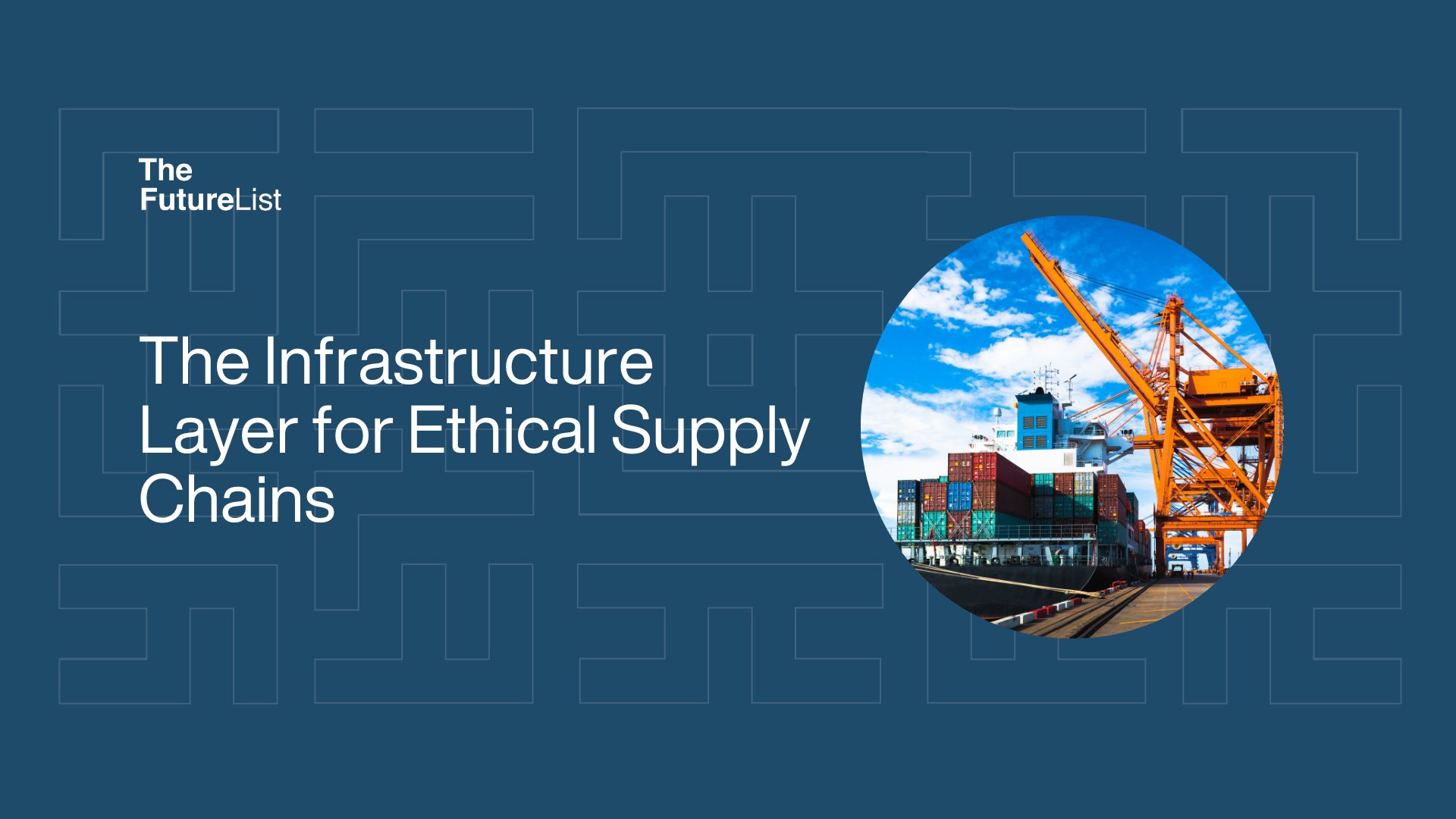
The Infrastructure Layer for Ethical Supply Chains
By Eric Kamande
In the race to decarbonize and derisk global commerce, brands face a growing need to trace not just their immediate suppliers, but their suppliers’ suppliers. From cotton to cobalt, regulators and consumers are asking: Do you know where your materials came from, and can you prove it?
At the heart of this challenge lies infrastructure. Not roads or ports, but digital infrastructure for ethical supply chains, tools that make ESG (Environmental, Social, Governance) traceability auditable, scalable, and standardized across value chains.
One company at the forefront is Sweden-based TrusTrace, led by CEO & Co-founder Shameek Ghosh, which recently launched a new AI-powered traceability module designed to help fashion brands prepare for Europe’s Digital Product Passport (DPP) regulation. But the implications go well beyond compliance.
Just as Plaid enables banking data to move securely between apps or Stripe makes online payments seamless, platforms like TrusTrace are becoming the connective tissue for sustainability data, bridging disconnected nodes in the value chain with verified insights.
Why infrastructure matters now
Supply chain traceability is no longer a back-office function; it has become a competitive differentiator. According to Bain & Company, brands that embed traceability into their operations are 2.5 times more likely to build resilient, trusted supply chains. And with mandatory regulations like the EU DPP and German Supply Chain Act taking effect, brands need system-wide visibility, not just siloed audits.
The infrastructure challenge lies in three core areas:
- Granular visibility: It’s not enough to know your Tier 1 supplier. Infrastructure must enable item-level tracing from raw material to finished product.
- Real-time assurance: Sustainability claims require evidence. That means ingesting, verifying, and locking data at every stage.
- Interoperability: Traceability tools must connect across regions, standards, and legacy systems to ensure consistent reporting and action.
What TrusTrace is building
TrusTrace’s platform combines supplier onboarding, document verification, material flow tracking, and AI-powered risk alerts into one system. Its new DPP module helps brands automate data capture aligned with EU regulations, reducing the manual burden of compliance. It integrates with common tools like SAP and PTC FlexPLM, ensuring data doesn’t live in a vacuum.
By treating traceability as infrastructure, not just compliance, TrusTrace positions itself as a digital backbone that other platforms and suppliers can plug into. The goal? Turn fragmented ESG data into usable intelligence at scale.
Where is this going
As ethical sourcing becomes standard, traceability infrastructure could evolve into a multi-sided network where data providers (like material certifiers or logistics firms) connect with data users (like brands, auditors, or regulators) through a common interface.
That future, if built on open, interoperable systems, could help turn today’s fractured value chains into accountable, intelligent ecosystems. And that makes platforms like TrusTrace not just helpful, but essential.
Get innovation insights from The FutureList weekly. Subscribe to our newsletter here
Categories
- Agritech
- Artificial Intelligence
- Biotech
- Blockchain
- Climate Tech
- Data Infrastructure
- Edtech
- Events
- Fashion
- Fintech
- Healthtech
- Infrastructure
- Innovation Memos
- Innovation Scout Program
- Insight
- Insurtech
- Machine Learning
- Martech
- Mobility
- Music and Media
- Partner Offers
- Perks
- Procurement
- Proptech
- Retailtech
- Ridehailing
- Ridesharing
- Robotics
- Space Aviation
- Supply Chain
- Talent
- Telecoms
- Uncategorized
- Venture Capital
- Wastetech
- Women In Tech
Recent Posts
- The Rise of Physical AI: Intelligence Moving Into the Real World
- Shaping the Future of Medicine: How Tiny Devices Are Revolutionising Vital Body Functions
- The Rural Health Operating System: Reinventing Access to Care in Africa
- Intelligent Grid Monitoring: How IoT and AI Are Powering the Future of Energy
- Innovation Memo with STEMAIDE: Hands-on STEM Education for Young Africans